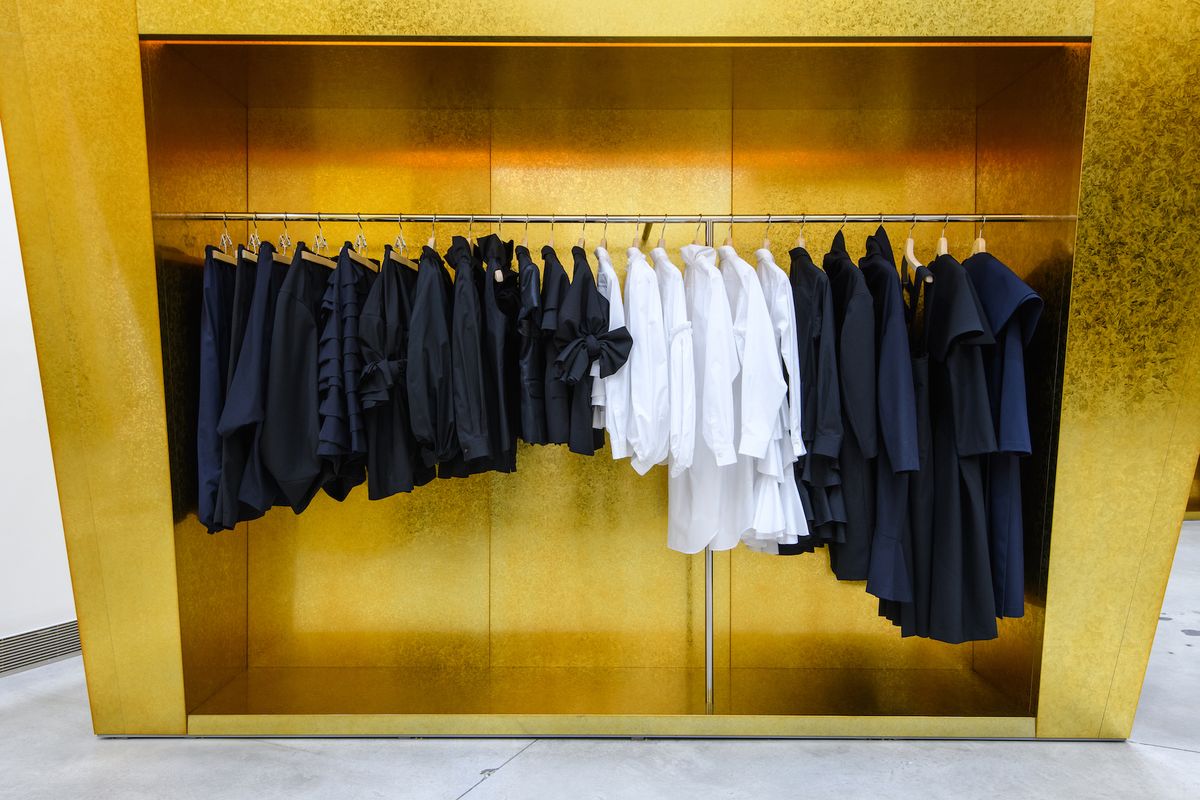Lasting Fashion: How Eco-Friendly Clothes Is Shaping the Future of Design
As the garment industry deals with increasing examination over its ecological effect, the surge of lasting fashion offers a promising choice that straightens style with eco-friendly duty. Using innovative materials such as recycled fibers and plant-based materials, together with innovative approaches like electronic and 3D printing, developers are redefining what it implies to be trendy in the contemporary age. Simultaneously, the expanding appeal of upcycling and second hand society is cultivating a change in the direction of a round economy. Yet, how does this movement truly influence the future trajectory of fashion, and what difficulties lie ahead in its widespread fostering?
Ingenious Sustainable Products
As the style industry grapples with its ecological effect, innovative lasting materials have emerged as a crucial solution for lowering environmental footprints. Amongst the most encouraging materials are those derived from all-natural, eco-friendly sources, such as natural cotton, hemp, and bamboo. These materials not just minimize reliance on nonrenewable fuel sources however also lessen unsafe pesticide use and water consumption. Organic cotton, for example, uses significantly much less water than conventional cotton and gets rid of the need for hazardous chemicals, thus maintaining soil health and wellness and biodiversity.
Along with plant-based materials, developments in biofabrication have led to the advancement of lab-grown textiles. Mycelium leather, obtained from mushroom roots, provides a eco-friendly and versatile alternative to animal leather. Its production results in considerably lower carbon emissions and water use, making it a more sustainable option for stylist seeking to align with environmentally friendly methods.
Recycled products are likewise acquiring traction, with polyester made from recycled plastic bottles representing a significant innovation. This development not only diverts plastic waste from landfills and seas however likewise decreases energy intake contrasted to generating virgin polyester. With each other, these materials underscore the possibility for a much more sustainable fashion business, leading the method for environmentally conscious design and manufacturing.
Eco-Conscious Manufacturing
Building on the technologies in lasting products, the fashion business is likewise re-evaluating its manufacturing procedures to additionally minimize environmental impact. Trick methods include decreasing water usage, reducing carbon exhausts, and eliminating hazardous chemicals. By taking on closed-loop systems, suppliers aim to reuse water and energy effectively, considerably diminishing waste. The combination of renewable resource sources, such as solar and wind power, right into production centers even more stops reliance on fossil fuels.
One more crucial facet is the reduction of harmful chemicals commonly used in dyeing and completing fabrics. Eco-conscious manufacturers are moving in the direction of plant-based dyes and waterless dyeing modern technologies, which not only guard local environments yet additionally improve employee safety and security. Innovations like digital printing decrease material waste and power consumption, offering a cleaner option to standard techniques.
With the advancement of blockchain modern technology, business can now offer comprehensive understandings right into their supply chains, ensuring ethical and eco pleasant techniques at each step. As the demand for eco-conscious items grows, makers are urged to innovate, ensuring that the future of style is both sustainable and fashionable.
The Increase of Upcycling
Upcycling, a transformative practice in lasting fashion, involves creatively repurposing thrown out materials right into new, high-quality items. This innovative strategy not only lowers waste however likewise decreases the need for basic materials, therefore minimizing the environmental impact of apparel production. By reimagining and rebuilding existing products, designers and style brands have the ability to infuse originality into their collections while advertising environmental obligation.

Additionally, the upcycling motion has encouraged small companies and independent designers, that typically lead in development due to their dexterity and imagination. By taking advantage of the abundant schedule of unused materials, these entities add to a circular economy, showing that fashion can be both sustainable and stylish. Via upcycling, the industry takes substantial strides towards a more mindful and responsible future.
Thrift Culture's Effect
The growing second hand culture dramatically reshapes the landscape of lasting fashion, stressing the significance of conscious usage. This social shift motivates consumers to accept pre-owned garments, thereby minimizing the demand for new garment manufacturing and reducing ecological impact. Thrift purchasing not only prolongs the lifecycle of clothing however likewise lowers the carbon footprint connected with manufacturing, delivering, and throwing away apparel.
An essential facet of thrift culture is its democratization of style. By offering a broad variety of designs from various ages at affordable costs, second hand shops make style available to a wider target market. This access fosters a sense of uniqueness and imagination, as customers mix and suit unique pieces to curate customized wardrobes without adding to the quick style cycle.
In addition, second hand society advertises circularity Read Full Article in fashion, aligning with the principles of a circular economic climate. By recirculating garments, the cycle of waste is interfered with, and sources are preserved. This technique sustains a change from a straight "take-make-dispose" version to an extra lasting structure. As even more customers and developers accept thrift culture, the apparel industry is urged to adjust, incorporating lasting methods to satisfy the growing demand for eco-conscious alternatives.

Future Trends in Fashion
Style's development is increasingly formed by technological innovations and sustainability-driven campaigns. As customers end up being extra ecologically aware, the market is reacting with groundbreaking developments that redefine the future of design. One popular fad is the rise of electronic fashion, where online garments can be put on in augmented fact environments, substantially reducing material waste. This change not only accommodates the digital-savvy customer but likewise decreases the environmental footprint commonly associated with garment manufacturing.
Moreover, the combination of blockchain innovation uses brand-new opportunities in openness and traceability, permitting customers to verify the sustainability credentials of their clothing. boutique fashion. This ensures accountability in supply chains and promotes honest sourcing methods. 3D printing is yet one more advancement that guarantees visite site to reinvent producing processes by allowing on-demand production, thus decreasing excess stock and waste
Furthermore, the advancement of bio-fabricated materials, such as lab-grown leather and plant-based fabrics, offers lasting options to standard materials. These developments decrease reliance on pet items and resource-intensive crops. As these modern technologies develop, they are positioned to transform the fashion landscape, combining design with sustainability. The future of fashion, as a result, lies in a seamless mix of modern technology, advancement, and environmental obligation.
Final Thought
The transformation of the garment industry through lasting methods indicates an essential shift in the direction of ecological accountability. The assimilation of ingenious products, eco-conscious manufacturing strategies, and the embracement of upcycling and thrift society highlights a commitment to minimizing ecological impacts. As these practices obtain momentum, they redefine the sector's narrative by focusing on sustainable and honest choices. This development not just lines up style with eco-friendly sustainability yet likewise establishes a precedent for future patterns concentrated on obligation and technology.
As the style industry faces boosting analysis over its environmental impact, the increase of lasting style provides an appealing choice that lines up design with eco-friendly responsibility.As the fashion market grapples with its environmental effect, cutting-edge lasting products have emerged as a vital remedy for lowering ecological footprints. read what he said Together, these materials underscore the potential for a more sustainable fashion industry, paving the way for environmentally conscious design and production.
Building on the innovations in sustainable products, the style sector is additionally re-evaluating its production procedures to additionally minimize environmental effect. boutique fashion.Upcycling, a transformative practice in sustainable style, entails artistically repurposing disposed of materials into new, high-quality items
Comments on “Discover the most up to date Trends in Boutique Fashion for Every Season”